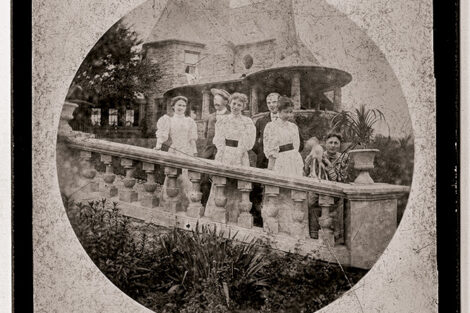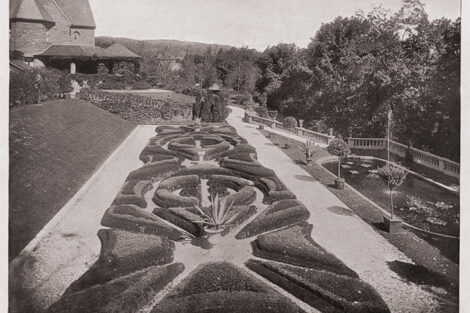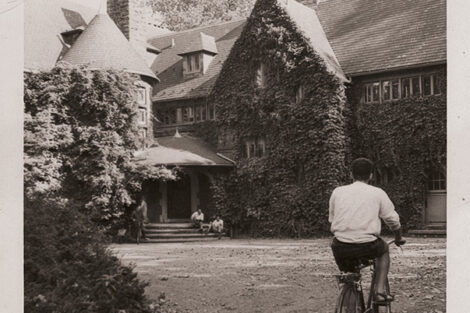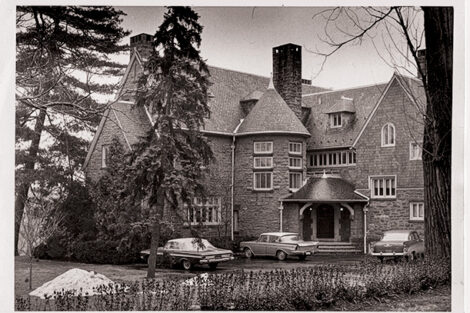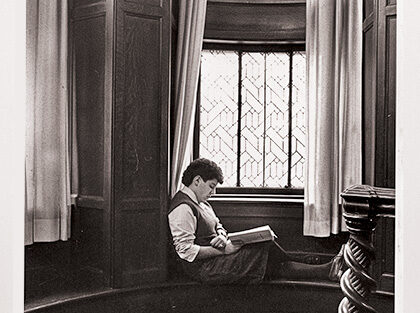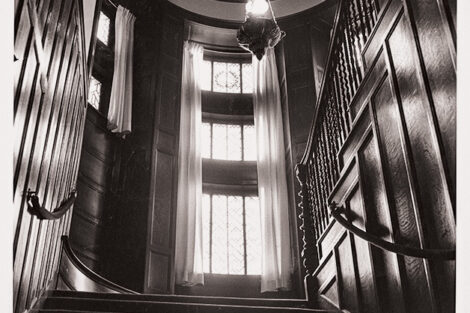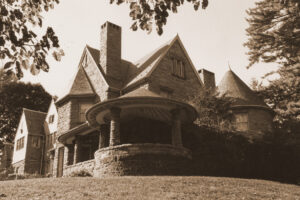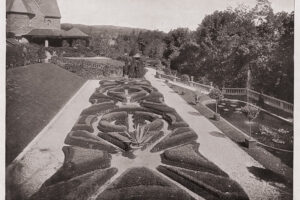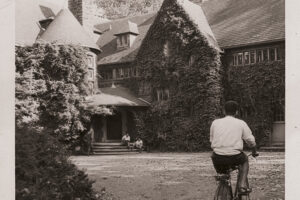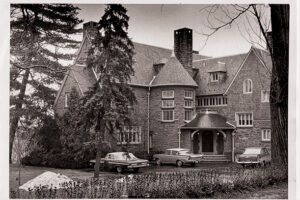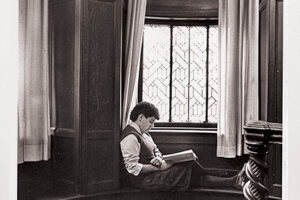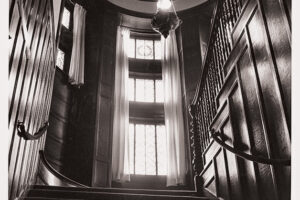The History & Lore of Oakhurst
What does 200 High Street have in common with the original Pennsylvania Station, Boston Public Library, and Madison Square Garden? These Beaux-Arts masterpieces were all designed by the architectural practice of Charles McKim, William Mead, and Stanford White—a firm that rose to prominence in the late 19th and early 20th centuries due to the contemporary European flair they brought to America.
Commissioned by John Eyerman, a member of Lafayette’s 1888 class who would eventually become a professor, the house was known among College Hill residents as “Oakhurst.” After Eyerman mysteriously disappeared from the area in the early 1900s, his wife sold the home to Easton residents Francis and Louise McKelvy, who coordinated a number of alterations to the original design between 1914 and 1921. Lavish gardens on the property were once reserved for the upper echelon of local residents, and the stone mansion remained an elegant landmark through the years that Francis McKelvy served as a member of Lafayette College’s Board of Trustees. Subsequently, the home has since been referred to as “McKelvy House.”
Enough stories about the property have emerged over the years that one might say it’s an excellent candidate to become a subject on one of modern-day pop culture’s many mystery or true crime series. Eyerman’s vanishing aside (he later turned up and passed away in Los Angeles), residents of McKelvy House over the years have experienced a number of paranormal hauntings that they believe is the ghost of Bessie Smith White, wife of architect Stanford White, who returned in the afterlife to avenge her husband’s well-documented infidelities. (White, himself, was infamously murdered by a mistress’s husband on the roof of Madison Square Garden.) Today’s McKelvy Scholars say that “Bessie” is a friendly ghost who frequently makes her presence known. Several long-ago residents passed away in the home, however, including Francis McKelvy. For that reason, we’ll never know exactly who its spirited
visitors are.
Few (other than area historians) realize that the presence of a McKim, Mead, and White property is one of the reasons that College Hill was added to the National Register of Historic Places in 1992. And though many of the interior features of McKelvy House have either been covered over by wood paneling (including a “secret” elevator) or aged by wear and tear, the home remains in good condition and stands as a local landmark.

